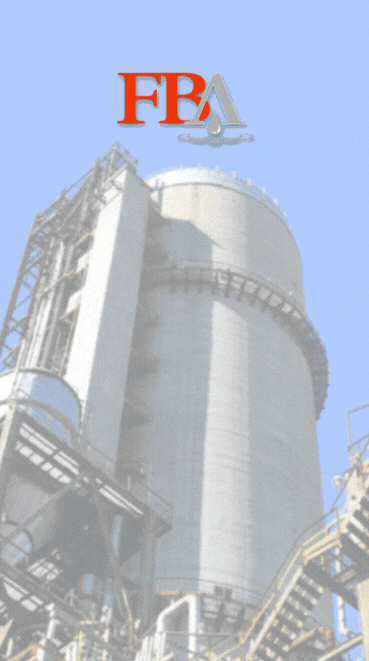Kenya Airways pioneers Kenya-made sustainable aviation fuel
- Kenya Airways
- Oct 30
- 5 min read

Through a strategic partnership with Bleriot SAF, a local Kenyan company, Kenya Airways is pioneering the production and use of Kenya-made sustainable aviation fuel (SAF).
“This groundbreaking initiative marks a significant step towards a greener future for aviation, showcasing our commitment to environmental leadership and positioning Kenya as a leader in decarbonizing air travel,” the airline stated.
Local production, global standards
Kenya Airways’ collaboration with Bleriot SAF has been instrumental in establishing local SAF production capabilities.
Kenya Airways provided essential knowledge in SAF regulatory compliance, adhering to international standards set by the International Civil Aviation Organization, the International Air Transport Association and the Kenya Civil Aviation Authority.
“We also shared critical market insights, including feasibility studies and scaling capabilities for both export and offtake, along with crucial technological expertise,” Kenya Airways stated.
This partnership has enabled Bleriot SAF to achieve an annual production capacity of 400 metric tons of SAF.
Kenya Airways said it is already complying with EU and U.K. SAF mandates by uplifting fuel with a minimum 2 percent SAF blend at European and U.K. departure airports such as CDG (Paris), AMS (Amsterdam), LHR (Heathrow), and LGW (Gatwick).
“For the ‘Aviation Challenge 2025,’ we are taking this a step further by using locally blended 2 percent SAF on multiple long-haul routes, significantly advancing our SAF adoption,” the airline said.
Addressing infrastructure, technology gaps
While Kenya Airways said its progress is significant, it acknowledges the current challenges in local SAF infrastructure.
Kenya currently lacks dedicated SAF Jet A1 blending facilities capable of operating at the scale required for commercial aviation.
This necessitates uplifting SAF abroad or transporting neat SAF long distances for blending, incurring additional shipping, handling and storage costs.
The absence of domestic blending capability also leads to longer lead times and increased exposure to price fluctuations in foreign markets.
Furthermore, there is no established pipeline or bulk transport system for moving neat or blended SAF between blending facilities and airports.
This forces reliance on road tankers, which are less efficient, slower and more expensive given Kenya’s vast geography.
These infrastructure gaps increase the risk of delays or contamination and require additional quality-control checks.
SAF production also demands advanced refining and certification technology, such as hydroprocessed esters and fatty acids (HEFA) or Fischer Tropsch synthesis, which involve high initial capital investment and complex regulatory approvals, according to the airline.
Importing or leasing this technology is financially burdensome for a nascent SAF market like Kenya’s.
These technology costs, combined with small initial volumes, limit economies of scale and further inflate costs.
Unlocking environmental benefits
Despite these challenges, the environmental benefits of SAF are compelling.
SAF offers a lifecycle greenhouse-gas (GHG) emissions reduction of up to 80 percent compared to conventional jet fuel. This comprehensive figure accounts for the entire process, from feedstock cultivation to refining, blending, transportation and combustion.
“A key aspect of our approach is carbon sequestration through feedstock cultivation,” Kenya Airways stated. “SAF feedstocks, including energy crops, waste oils and agricultural residues, are grown on arid or nonagricultural land, avoiding competition with food production. As these plants grow, they absorb CO2 from the atmosphere, creating a natural carbon-sink effect. In Kenya, this approach could increase national tree cover by approximately 0.04 percent annually, contributing to reforestation and ecosystem-restoration goals.”
By replacing conventional jet fuel with SAF blends, thousands of tons of CO2e emissions can be avoided each year, representing a measurable contribution toward IATA’s net-zero by 2050 target and Kenya’s nationally determined contribution (NDC) under the Paris Agreement.
Additional environmental co-benefits include diverting waste oils and residues from landfills, preventing methane emissions and reducing emissions tied to long distance transportation of imported fuels.
“Our SAF supply chains also encourage biodiversity-friendly land-management and agroforestry practices, improving soil health, water retention and wildlife habitats,” the airline stated.
Kenya Airways said its investment in local SAF production positions both the airline and Kenya as regional leaders in aviation decarbonization, offering a clear pathway for other African carriers and corporate travelers to reduce their climate impact.
Partnerships, scaling plans
Kenya Airways has been instrumental in establishing the National SAF Committee in Kenya, working to embed SAF provisions into the country’s renewable energy policy.
This committee unites regulators, energy experts, airlines and environmental agencies to define standards, streamline approvals and create incentives for local SAF production, ensuring aviation decarbonization aligns with national climate commitments.
“We are also a key participant in a regional SAF technical working group, advocating for SAF adoption across Africa,” Kenya Airways stated. “This group facilitates knowledge sharing, harmonizes certification and safety standards, and lobbies for regional financing mechanisms to support SAF production. Our involvement ensures East Africa’s perspective is represented, encouraging co-investment in SAF projects and reducing Africa’s reliance on expensive imports.”
In partnership with Kenya Forestry, Kenya Airways said it is securing nonagricultural and arid land for the cultivation of energy crops.
This not only ensures a steady feedstock supply for SAF production but also restores degraded ecosystems and increases Kenya’s tree cover, further amplifying environmental benefits.
“Our long-term strategy is to position Kenya as a regional SAF hub, providing blended SAF not only for our own operations but also for other African carriers,” the airline said. “Beyond 2025, we plan to progressively increase SAF blend percentages, aiming for higher mandates aligned with EU and U.K. trajectories, such as 6 percent to 10 percent by 2030. This vision includes investments in blending facilities, pipeline networks and training programs to build local technical expertise, ensuring Africa has autonomous and competitive SAF production capacity.”
Economic impact, local empowerment
Local SAF production is projected to create direct jobs in plant construction, operations, quality control and blending, as well as indirect jobs in feedstock cultivation, harvesting, logistics and maintenance.
This job creation is particularly impactful in rural and arid regions.
SAF development aligns with Kenya Airways’ broader ESG objectives by improving livelihoods, reducing income inequalities and supporting inclusive economic growth, according to the airline.
By engaging local farmers, forestry associations and others, the SAF value chain offers diverse income streams.
Furthermore, cultivating energy crops on nonarable or degraded land regenerates ecosystems and enhances biodiversity, translating into long-term economic resilience for local communities, Kenya Airways stated.
“Crucially, local production retains value within the Kenyan economy, stimulating green investment and reducing foreign-exchange exposure,” the airline said. “Kenya’s SAF initiative, backed by partnerships like Bleriot SAF and funding commitments, signals to international investors that the country is serious about sustainable aviation. This can attract climate finance, public-private partnerships and regional collaborations, accelerating both SAF scaling and broader green-economy development.”
Kenya Airways said it is committed to leading the charge in sustainable aviation, “demonstrating that homegrown innovation can pave the way for a greener, more prosperous future for Kenya and the African continent.”


































